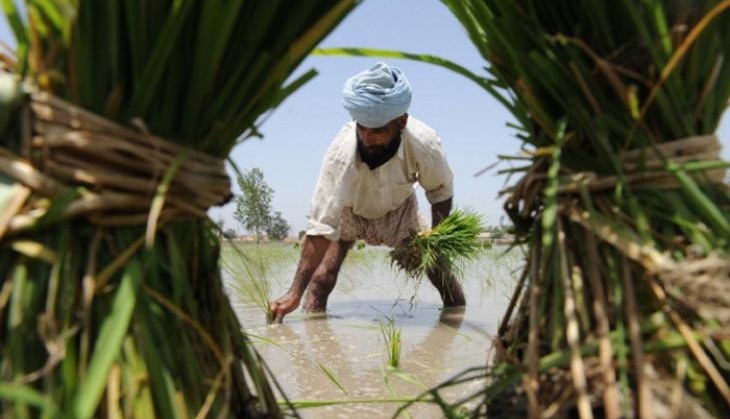Santosh Kumar Mohapatra
Agrarian distress, including farm loan waivers, is likely to be the single-most important issue at the coming general elections, as the relentless pursuit of the Congress to outwit the BJP government over the issue seems to have paid off as out of the 424 rural seats in Madhya Pradesh, Chhattisgarh and Rajasthan, the BJP managed to win just 153 seats at the recent Assembly elections in these states compared with 294 they had won in 2013. Without contemplating the fiscal stress, the Congress stuck to its pre-poll promise of farm loan waiver in Madhya Pradesh and Chhattisgarh within six hours of the swearing-in of the respective chief ministers.
This impelled Congress President Rahul Gandhi to raise the tirade against the Modi government and promise that the Congress manifesto for 2019 would promise farm loan waiver. Opposition parties across states have started clamouring for loan waivers and there is every chance that other states are likely to join the fray as elections approach.
However, farm loan waivers will jeopardise finances of states. Economists, including former RBI governor Raghuram Rajan and the current IMF Chief Economist Gita Gopinath, have asked the political establishment not to resort to such populist tricks. Rajan has stated that farm loan waivers are neither the best solution to address farmers’ distress nor should they be made an electoral promise. However, those railing against waivers for reasons of fiscal prudence, have overlooked this crucial political issue, which needs in-depth analysis.
Farmers are, undoubtedly, the worst victims of the recent agrarian crisis. Many want to quit farming if they get an alternative avenue of earning.
Farm loan waiver is not a permanent solution; but it is not the worst solution as State Bank of India Research has warned. It offers both advantages and disadvantages; loan waiver is needed as an emergency, short-term solution. It does not address the root causes of the agrarian crisis; it is like taking a paracetamol tablet to bring a fever down without diagnosing the cause of the fever.
The agrarian crisis has intensified with the onset of neoliberal policy, which gives weightage to corporates at the cost of agriculture and farmers. Farmers’ woes and agrarian distress are not results of failure to repay loans; rather, they reflect lack of remunerative prices, increase in input costs such as fertilisers, agricultural equipment, lack of irrigation facilities, low agriculture productivity, inability of small farmers to take advantages of modern technology, vagaries of monsoon, impact of natural calamities on crops, higher interest on loan availed from money lenders and the lack of access to institutional loans.
Growing privatisation of education and healthcare as an offshoot of neo-liberalism has escalated the cost of both services, leading to an erosion of purchasing power, decline in the standard of living and impoverishment of masses, including farmers. Unless those are addressed, farmer suicides would not decline and the agrarian crisis will continue to plague the Indian economy at a greater degree.
Loan waivers, while they cannot be rejected outright, are not free from blemish. They primarily benefit tenant farmers and not sharecroppers. Second, many farmers depend on non-institutional sources, such as money lenders and microfinance institutions lending at usurious rates of interest, for loans. Waivers will not benefit them. Even those who repay loans in time will not be rewarded for their honesty.
However, farmers who have deliberately defaulted on loans will benefit. Waivers will encourage the culture of default among farmers.
The definition of priority sector lending has been relaxed over the years to include a range of sundry commercial activities. Loan waivers will merely end up aiding these interest groups.
They will only help strengthen banks as the amount of their agricultural NPAs will be reduced by the amount of loan waived.
However, the clamour against loan waiver on the plea of fiscal prudence is unwarranted as the government can raise resources by taxing the rich and by curbing tax evasion, as our tax-GDP ratio is one of the lowest in world; it is less than half that of OECD countries. The country loses a lot of resources to tax forgone and tax evasion. No economist speaks of state finances, which have been hit by Rs 2.7 lakh crore, or 1.8 per cent of India’s GDP, owing to Ujwal Discom Assurance Yojana (UDAY).
What is reprehensible is that non-repayment of bank loans by corporate behemoths, or huge tax concessions given to rich corporations, are dubbed as pro-growth, market-friendly and beneficial to the economy, whereas any concession given to poor farmers in the form of subsidies or loan waivers is treated as populist by the so-called economists. It is wrong, discriminatory and anathema to a welfare state. One could cite RBI data on Non-Performing Assets (NPAs) showing that as on December 31, 2017, the industrial sector accounted for 20.41 per cent of the gross NPAs of scheduled commercial banks, while the agriculture sector accounted for a modest 6.53 per cent.
Some suggest that income support schemes may be a more effective alternative to loan waivers to address rural distress, which is expected to cost only Rs 50,000 crore a year — or 0.3 per cent of GDP. However, the government policy should be to make farming profitable for all so that people feel interested in farming, instead of leaving it. We must remember that if farmers don’t survive, no one will be left to produce food to feed us.
The writer is an Odisha-based economist. e-Mail: skmohapatra67@gmail.com
